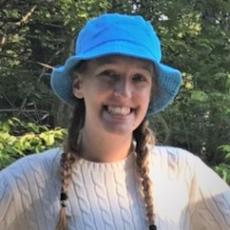
High elevation floodplains, which are fed by snowmelt, are particularly vulnerable to climate change, and this could impact the amount and timing of seasonal flooding. We do not know how shifts in seasonal flooding will impact the cycling of elements such as carbon and iron. Floodplain soils are rich in carbon, which can often be found in association with minerals such as iron (“mineral-organic associations”). Because iron is redox active, during flooding periods, iron becomes reduced. When iron becomes reduced it becomes soluble and releases carbon that was associated with it. The carbon could then find its way into the atmosphere as carbon dioxide and dissolved minerals could end up in the river. Therefore, understanding how seasonal flooding impacts mineral-organic associations is important for both climate change and water quality.
I worked to answer the questions of how carbon is being stored in the soil of the East River floodplain (Gothic, CO), particularly how this relates to the mineralogy and seasonal flooding dynamics. Soil samples were taken at a meander of the East River floodplain at three different distances away from the river (MC1 is closest to the river and MC3 the furthest away from the river, see attached figure). These samples were taken over the course of flooding to drainage, between May and September in years 2018 and 2019. In the lab sequential extractions have been performed on the 2018 data but not yet on the 2019 data. These extractions target different mineral-organic associations in the soil. Hydroxylamine extracts more reactive minerals and their associated carbon, whereas dithionite extracts less reactive minerals (such as more crystalline minerals) (Heckman et al. 2018). We used these extractions to see how more reactive minerals and less reactive minerals in the soil could contribute to soil organic matter storage or loss.
This summer, I read and summarized several scientific papers in order to better understand what changes we would expect in the mineral-organic associations in East River floodplain soils (Heckman et al. 2018, Possinger et al. 2020, Lehmann and Kleber 2015, Kleber et al. 2007). Once I had enough knowledge, I formed hypotheses about how I expect soil iron and aluminum and carbon concentrations to shift with seasonal flooding. Although the lab work wasn’t completed on the 2019 samples before the shutdown, Cam provided extraction data from the East River soil samples taken in 2018 to test my hypotheses. I used the statistical and graphical program R to make figures of the data and test my hypotheses. I found that there was slightly more iron in drained months compared to flooded months, especially in the shallow soils extracted with dithionite and subsurface extracted with hydroxylamine (see attached figure) which supported my hypothesis because iron is redox active and would have been soluble and thus lost from mineral-organic associations during flooded months. In contrast, I did not see much change in aluminum concentrations over the course of the flooding season (see attached figure), which makes sense because unlike iron, aluminum is not redox active and so I wouldn’t expect it to be lost during flooding. I found no significant trend in carbon concentrations between flooded and drained months (see attached figure), which could be because 2018 was a drought year so there were no significant changes. When we have the 2019 data, which looks at the same floodplain under a year of extreme flooding, I would like to study the carbon trends and see if there are any significant differences between 2018 and 2019. See attached document for references.
I learned how to use R which will be useful throughout my career and I also increased my skill in reading and undertanding scientific papers. Additionally, I am interested in environmental engineering and having background knowledge on soil research could help me in my career.
I was very grateful for this opportunity to continue to work for the lab despite covid restrictions. Cam Anderson taught me so much about soil dynamics and how to use R this summer and it was an amazing learning experience!